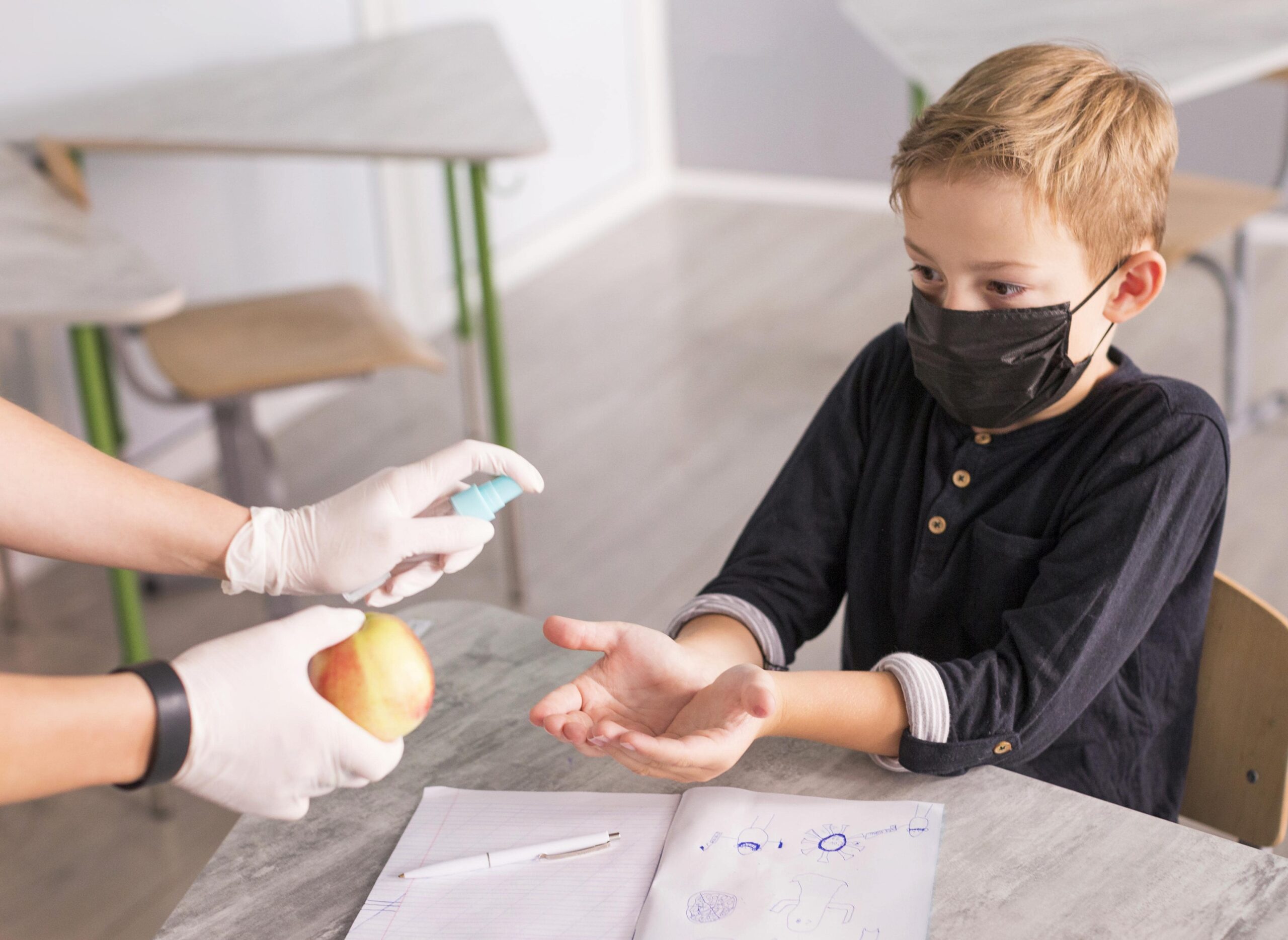Child safety is a matter of vital importance in today’s world. As parents, caregivers, and responsible consumers, we all share the responsibility of ensuring that the products designed for children are safe and free from potential hazards. This responsibility extends to manufacturers as well, who must adhere to stringent safety standards to protect the most vulnerable members of our society—our children.
In this blog post, we delve into the vital realm of consumer product safety testing and its pivotal role in safeguarding the well-being of our little ones. We will explore the intricacies of how these rigorous tests are conducted, the regulatory standards that govern them, and the innovative technologies that are transforming child product safety.
The Significance of Child Safety in Consumer Products
Child safety in consumer products cannot be overstated. Consider these stark realities:
- Choking Hazards: According to the Consumer Product Safety Commission (CPSC), choking on small parts remains a leading cause of toy-related deaths. In 2020, there were 10 toy-related deaths, with children under three being particularly vulnerable.
- Chemical Exposure: Hazardous substances in products can pose severe risks. The recall of millions of drop-side cribs due to entrapment hazards serves as a glaring example.
- Burns and Electrical Safety: Poorly designed electronics and inadequate safety standards can result in burns and electrical shocks. Instances include malfunctioning battery-powered toys or electronics with exposed wires.
- Recalls: Frequent recalls are a testament to ongoing safety concerns. Recent recalls include defective strollers, car seats, and infant sleepers.
- Tragic Incidents: Real-life tragedies, such as suffocation due to poorly designed crib bumpers or accidents with non-compliant car seats, serve as painful reminders of the consequences of inadequate safety measures.
These incidents underscore the vital importance of rigorous consumer product safety testing to protect the lives and well-being of our children.
Types of Consumer Product Safety Tests
- Choking Hazard Testing: This test assesses if small parts or components of a product pose a choking risk to young children. It’s crucial for toys and child-care items.
- Chemical Testing: Evaluates products for harmful chemicals such as lead, phthalates, and other toxic substances. This test ensures that products do not contain substances harmful to health.
- Flammability Testing: Especially critical for textiles, bedding, and children’s sleepwear, this test determines how easily a product ignites and its ability to resist flames.
- Electrical Safety Testing: Ensures that electronic products meet safety standards to prevent electrical shocks, fires, and other electrical hazards.
- Mechanical Testing: Evaluates the structural integrity and durability of products, assessing their ability to withstand stress, impact, and normal wear and tear.
- Biological and Microbiological Testing: Relevant for products like baby food, this test examines microbiological contamination and the presence of pathogens.
- Thermal Testing: Evaluates how products react to temperature changes, ensuring they can withstand extreme heat or cold without posing risks.
- Toxicology Testing: Determines if a product’s components, such as dyes or chemicals, can cause adverse health effects over time through repeated exposure.
- Product Labeling and Packaging Compliance Testing: Verifies that product labeling and packaging provide accurate information about the product’s use, safety warnings, and appropriate age recommendations.
- Age Suitability Testing: Assesses if a product is age-appropriate and safe for its intended user group, particularly important for toys and children’s products. Consumer product safety testing involves a combination of these and other specialized tests, depending on the nature of the product. The goal is to identify potential risks, ensure compliance with safety standards, and protect consumers, especially children, from harm.
Regulatory Standards and Guidelines
Regulatory agencies such as CPSC and FDA are vital for setting safety standards to protect consumers, including children. They establish rules to ensure the safety of various child products:
Role of Regulatory Agencies
- Consumer Product Safety Commission (CPSC): The CPSC is a federal agency in the United States responsible for protecting consumers from unreasonable risks associated with consumer products. Its primary role is to develop and enforce safety regulations for a wide range of consumer products, including those intended for children.
- Food and Drug Administration (FDA): The FDA is a federal agency responsible for protecting and promoting public health by ensuring the safety and efficacy of a wide range of products, including food, drugs, medical devices, and cosmetics. While it primarily focuses on products related to food and drugs, it also plays a role in regulating certain aspects of child products, such as baby formula and certain medical devices.
Specific Safety Regulations and Guidelines Applicable to Child Products
- Children’s Toys and Products: The CPSC has established stringent safety standards for children’s toys and products to prevent choking hazards, lead exposure, and other dangers. For example, toys and products for children under 3 years of age must undergo rigorous testing to ensure they do not pose choking risks.
- Cribs and Baby Furniture: The CPSC has specific safety standards for cribs and other baby furniture to reduce the risk of injuries or suffocation. These standards address issues such as crib slat spacing, mattress fit, and the use of drop-side cribs (which have been banned).
- Child Car Seats: The National Highway Traffic Safety Administration (NHTSA), another regulatory agency, sets safety standards for child car seats to protect infants and children during car travel. Car seats must meet specific crash test requirements and age/size-appropriate design standards.
- Child-Resistant Packaging: Both the CPSC and the FDA have regulations in place to ensure that certain products, such as medications and household chemicals, have child-resistant packaging to prevent accidental ingestion or poisoning by young children.
- Children’s Sleepwear: The CPSC has strict flammability requirements for children’s sleepwear to reduce the risk of burn injuries. Sleepwear must be designed to self-extinguish if it catches fire.
- BPA in Baby Bottles and Sippy Cups: The FDA has banned the use of bisphenol-A (BPA) in baby bottles and sippy cups due to concerns about its potential health effects on children.
- Baby Formula: The FDA regulates the safety and nutritional quality of infant formula to ensure it meets the specific dietary needs of infants and is free from harmful contaminants.
- Child-Resistant Lighters: The CPSC has safety regulations in place to reduce the risk of children accidentally igniting lighters, including requirements for child-resistant features.
These are just a few examples of the safety regulations and guidelines established by regulatory agencies to protect children from potential
The Testing Process
Consumer product safety testing steps involves:
- Regulation Identification: Identifying applicable safety regulations.
- Test Planning: Creating a comprehensive plan for required tests.
- Sample Selection: Choosing representative product samples.
- Accredited Labs: Sending samples to environmental labs, such as CHEMSERVE for chemical testing.
- Testing: Labs conduct mechanical, chemical, electrical, and other tests.
- Data Collection: Gathering and documenting test results.
- Analysis: Experts assess results for compliance with safety standards.
- Certification: Accredited bodies certify products meeting safety criteria.
- Report Generation: Detailed reports are created, crucial for compliance.
- Market Access: Certified products can be legally sold, assuring consumers of safety.
CHEMSERVE Environmental testing together with accredited bodies ensure rigorous, reliable testing and certification, building trust among consumers, regulators, and manufacturers.
Common child products subject to safety testing include:
- Toys: Tested for choking hazards, chemical safety, and durability.
- Cribs and Bassinets: Checked for structural integrity and suffocation risks.
- Car Seats: Tested for crash safety and secure installation.
- Child Carriers: Evaluated for comfort, support, and safety.
- Children’s Clothing: Checked for flammability and small parts that could be choking hazards.
- Baby Bottles and Sippy Cups: Tested for material safety and functionality.
- Strollers and High Chairs: Evaluated for stability and safety features.
- Child-resistant Packaging: Ensures safety for medications and household chemicals.
For example, rigorous testing of car seats has led to significant improvements in child safety during car travel, reducing the risk of injury in accidents. Similarly, safety testing of cribs has resulted in the elimination of hazardous drop-side cribs, reducing the risk of infant injuries and fatalities
Conclusion
Consumer product safety testing, particularly for children’s products, is an indispensable step in ensuring they conform to safety standards and pose no risks. Regulatory agencies such as CPSC and FDA play a crucial role in establishing and upholding these standards. The testing process encompasses various stages, from identifying regulations to conducting tests in accredited laboratories and ultimately obtaining certification for market access.
Products like toys, cribs, car seats, and clothing undergo rigorous safety testing, ultimately leading to improved child safety by eliminating potential hazards. This thorough testing process is not only essential for safeguarding children but also for fostering consumer trust and maintaining product quality.
By adhering to stringent safety standards, safety testing reduces the likelihood of injuries, accidents, or health risks associated with children’s products. This, in turn, provides confidence to parents and caregivers, assuring them that the products they purchase are indeed safe for children to use. It’s a mutually beneficial system that enhances both consumer trust and product quality.
For those seeking further information on child safety guidelines and regulations, valuable resources are available from organizations like CPSC, FDA, NHTSA, Safe Kids Worldwide, and AAP. Your commitment to staying informed about safety standards ensures the well-being of our youngest consumers and promotes a safer marketplace for all.







Leave A Comment